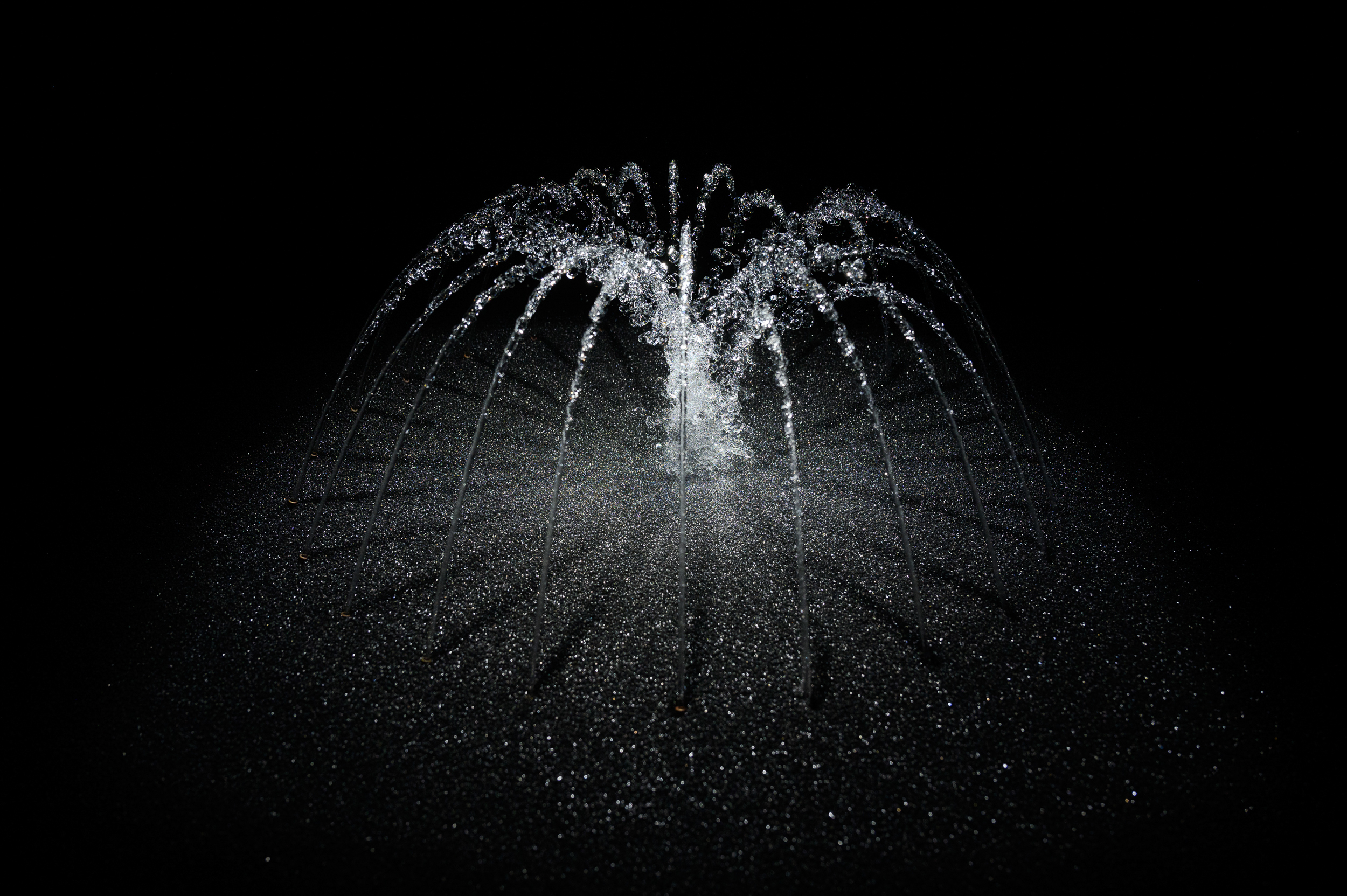Shows
Olafur Eliasson’s “Your curious journey”
,%20as%20part%20of%20%E2%80%98Olafur%20Eliasson_%20Your%20curious%20journey%E2%80%99%20at%20SAM%20at%20Tanjong%20Pagar%20Distripark-%20Photo_%20Joseph%20Nair,%20Memphis%20West%20Pictures-%20Image%20courtesy%20of%20copy.jpg)
,%20as%20part%20of%20%E2%80%98Olafur%20Eliasson_%20Your%20curious%20journey%E2%80%99%20at%20SAM%20at%20Tanjong%20Pagar%20Distripark-%20Photo_%20Joseph%20Nair,%20Memphis%20West%20Pictures-%20Image%20courtesy%20of%20copy.jpg)
May 10–Sep 22, 2024
Olafur Eliasson: Your curious journey
Singapore Art Museum
Trying to capture Icelandic-Danish artist Olafur Eliasson’s work on a smartphone is like trying to snag a rainbow with a net. This is because his exploration of ecological themes, intertwining natural elements such as light, water, and air in immersive displays, flourish more in person than through a digital lens. Take, for instance, Yellow Corridor (1997), exhibited at Eliasson’s first solo show in Southeast Asia, “Your curious journey” at the Singapore Art Museum (SAM). Positioned adjacent to the museum’s entrance, Eliasson’s corridor bathed visitors in his signature yellow “monofrequency” lights that filter out color, transforming everything into grayscale. Yet, when photographed, his installation adopts the hue of a Halloween pumpkin. In effect, the work demands one’s undivided attention and compels visitors to immerse themselves in their immediate surroundings.
Eliasson’s artistic vision, anchored in interconnectedness and interdependence, provokes a connection with the material world, especially in light of the looming ecological crisis. This resonates with philosophical frameworks such as Object-Oriented Ontology (OOO), Bruno Latour’s Actor-Network Theory (ANT), and Timothy Morton’s notion of “hyperobjects,” all of which challenge anthropocentrism. Morton defines “hyperobjects” as immense and complex entities or phenomena like climate change and the Covid-19 pandemic; spanning vast scales of time and space, they become difficult to fully grasp despite profoundly shaping our existence. Eliasson, meanwhile, seeks to render this phenomena accessible and palpable, offering viewers direct engagement with hyperobjects at a visceral, comprehensible level.
%E2%80%99%20(2009),%20as%20part%20of%20%E2%80%98Olafur%20Eliasson_%20Your%20curious%20journey%E2%80%99%20at%20SAM%20at%20Tanjong%20Pagar%20Distripark-%20Photo_%20Joseph%20Nair,%20Memphis%20West%20Pictures-%20Image%20courtesy%20of-2.jpg)
In Beauty (1993), a single spotlight casts a rainbow onto a curtain of mist in a dimly lit space. But due to variations in viewing angles and height, each viewer perceives the colors uniquely. As one navigated this spectral environment, its overwhelming sensory components, from the visuals to a pervasive scent of rubber mats cloaking the floor, elicited a medley of sensations: delight, distaste, wonder, and disorientation. Equally captivating and unsettling was Object defined by activity (then) (2009), featuring a fountain in a pitch-black room illuminated by a pulsating strobe light. While the motion of water appeared suspended in time, its sound suggested a continual stream, and this coexistence between dynamic motion and static appearance confounded understanding. Oscillating between the familiar and the strange, the ambiguity of both works underscores the uncanny nature of hyperobjects as described by Morton, challenging social and material perceptions.
Displayed in the exhibition was Eliasson’s new work The Seismographic Testimony of Distance (Berlin–Singapore, no. 1 to no. 6) (2024), comprising six unique seismographic sketches produced by the artist’s drawing machines. These mechanisms were installed within the shipping crates that transported the artworks exhibited in “Your curious journey,” chronicling their voyage from Berlin to Singapore via land and sea. By highlighting the works’ mode of transport, Seismographic Testimony illustrated efforts to reduce the exhibition’s carbon footprint, preempting any potential criticism. As Eliasson’s solo show travels to different locations, this artwork will continually evolve, linking each iteration to construct a broader global narrative and emphasize our shared interconnectedness.
,%20as%20part%20of%20%E2%80%98Olafur%20Eliasson_%20Your%20curious%20journey%E2%80%99%20at%20SAM%20at%20Tanjong%20Pagar%20Distripark-%20Photo_%20Joseph%20Nair,%20Memphis%20West%20Pictures-%20Image%20courtesy%20of%20the%20artist%20and%20Singapor-3.jpg)
This sentiment was reinforced by Eliasson’s Moss wall (1994), which incorporates resilient reindeer cup lichen (Cladonia rangiferina), a symbiont of a fungus and an alga found in arctic regions. This unlikely incorporation of natural material mirrors themes from anthropologist Anna Lowenhaupt Tsing’s research on matsutake mushrooms—best expressed in her 2015 book The Mushroom at the End of the World: On the Possibility of Life in Capitalist Ruins—and her advocating for “collaborative survival.” Like Tsing, Eliasson suggests that embracing precarity can foster transformation and sustainable existence in an interconnected world.
Other artworks reflected Eliasson’s deep connection to his native Iceland, where landscapes serve as potent symbols of climate change. One notable example was his photography work The glacier melt series (1999/2019), a striking documentation of 30 glaciers’ recession across two decades. Similarly, in his previously unseen mixed-media sculptural installation The last seven days of glacial ice (2024), the artist uses bronze casts to visualize the progressive stages of an ice block (sourced from a southern Icelandic beach) melting. The white, ice-like casts were accompanied by glass orbs that represent how much water is lost in each stage of melting, providing a poignant commentary on glacial vulnerability.
,%20as%20part%20of%20%E2%80%98Olafur%20Eliasson_%20Your%20curious%20journey%E2%80%99%20at%20SAM%20at%20Tanjong%20Pagar%20Distripark-%20Photo_%20Joseph%20Nair,%20Memphis%20West%20Pictures-%20Image%20courtesy%20of%20the%20artist%20and%20Sin%20(1).jpg)
In the Singapore exhibition, two exclusive works were presented in dedicated galleries. Eliasson’s participatory installation The cubic structural evolution project (2004) invited visitors to construct their own future city using piles of white Lego bricks on a long table. But the standout work was Symbiotic Seeing (2020), an immersive installation that transformed the ceiling into a captivating display of aurora-colored liquid patterns, created by colored lasers and intermittent bursts of fog. These visuals dynamically responded to visitors’ body heat and movements, generating mesmerizing swirls, currents, and ripples. As audiences navigated this ethereal, sensory environment, they thus became aware of the typically imperceptible physical impact they exert on their surroundings.
SAM’s display of 18 artworks from across three decades of Eliasson’s career comprehensively demonstrated his artistic evolution and ecological inquiries. However, venue constraints, especially in the main gallery, somewhat diminished the impact of Eliasson’s creations, which are best suited to expansive spaces. Additionally, despite the artist’s known encouragement of unconventional interactions, visitors at SAM were ironically cautioned against tactile engagement (such as touching the Moss wall or disturbing the laser/fog components). Nevertheless, themes of interconnectedness within complex systems were consistent throughout “Your curious journey,” a poignant reminder of our shared responsibility and a central element of Eliasson’s enthralling practice.
Yvonne Wang is a writer based in Singapore.







